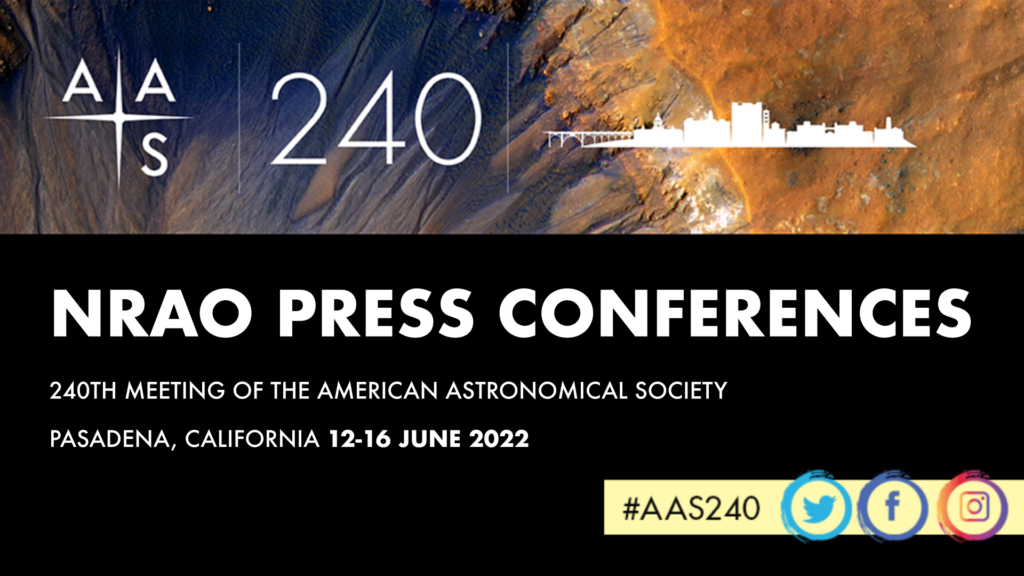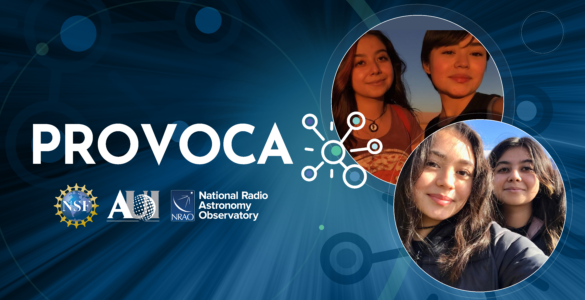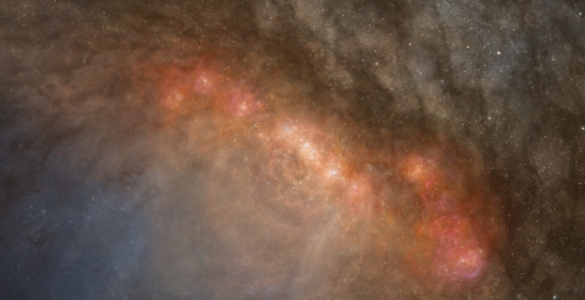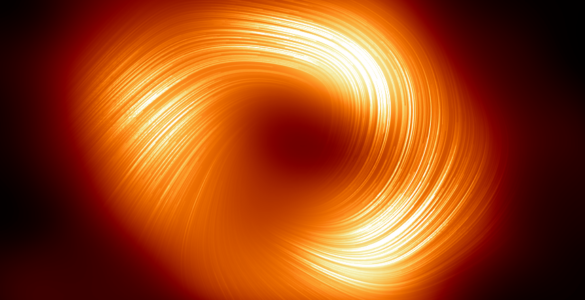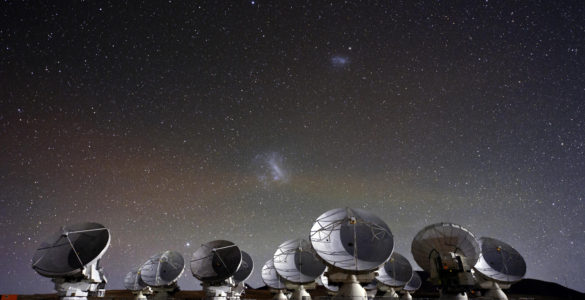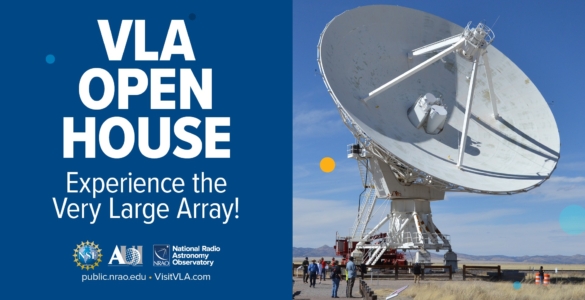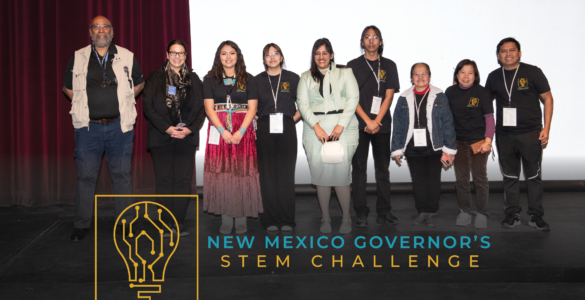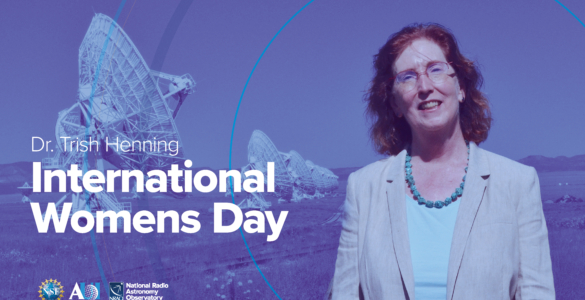Seven new scientific results from the Atacama Large Millimeter/submillimeter Array (ALMA), the Very Large Array (VLA), and the Very Large Array Sky Survey (VLASS) will be revealed at multiple press conferences during the 240th meeting of the American Astronomical Society (AAS) between June 13-15, 2022 in Pasadena, California.
The new results range across a wide variety of astronomical phenomena, from star systems to pulsars, and from young galaxies to stellar feedback loops.
Press conferences will be held in person during the conference, and streamed live on the AAS Press Office YouTube Channel.
Note: Each press conference consists of a panel of scientists presenting 4-5 unique scientific results. The number listed in parentheses indicates the order of presentation for the listed result.
All press conferences are listed and will occur in Pacific Time.
—
Monday, June 13th, 2022 @ 2:15pm PDT — Magnetic Fields and Galaxies
Erin Guilfoil-Cox, Northwestern University (2)
“The Twisted Magnetic Field in a Protobinary System”
Embargo access for members of the press must be requested from amandamo@northwestern.edu or kari.frank@northwestern.edu.
Tuesday, June 14th, 2022 @ 10:15am PDT — Nearby Disks and Faraway Galaxies
Meredith MacGregor, University of Colorado Boulder (2)
“A New ALMA View of the HD 53143 Debris Disk”
Embargo access for members of the press, please contact aoliver@nrao.edu.
Tuesday, June 14th, 2022 @ 2:15pm PDT — Galactic Neighbors and Insights from ALMA
Ambesh Singh, University of Arizona (4)
“ALMA Reveals the Molecular Outflows in the Ejecta of VY Canis Majoris”
Embargo access for members of the press, please contact stolte@arizona.edu or mikaylamace@arizona.edu.
—
Hollis Akins, Grinnell College (5)
“ALMA Reveals Extended Cool Gas and Hot Ionized Outflows in a Distant Star-Forming Galaxy”
Embargo access for members of the press, please contact aoliver@nrao.edu.
Wednesday, June 15, 2022 @ 10:15am PDT — Stars, Their Environments, and Their Planets
Michael Jones, University of Arizona (1)
“Young, Blue, and Isolated Stellar Systems in the Virgo Cluster”
Embargo access for members of the press, please contact mikaylamace@arizona.edu or stolte@arizona.edu.
—
Tony Wong, University of Illinois Urbana-Champaign (3)
“ALMA Unravels a Star Formation Standoff in the Tarantula’s Gaseous Web”
Embargo access for members of the press, please contact aoliver@nrao.edu.
Wednesday, June 15, 2022 @ 2:15pm PDT — Extragalactic Investigations and Evolved Stars
Dillon Dong, California Institute of Technology (2)
“Discovery of an Extremely Luminous, Decades-Old Pulsar Wind Nebula in the Very Large Array Sky Survey”
Embargo access for members of the press, please contact dfinley@nrao.edu.
—
The full press conference program is available on the AAS 240 Press Web Site. NRAO Public Information Officers will be available to assist journalists with all listed press conferences during the live conference.
NRAO Media Contacts
Amy C. Oliver
Public Information and News Manager, NRAO
Public Information Officer, ALMA-North America
Tel: +1 434-296-0314
aoliver@nrao.edu
Dave Finley
Public Information Officer, NRAO-VLA, VLBA
(505) 241-9210
dfinley@nrao.edu
In addition to the press conferences, dozens of papers with new and ongoing science results from NRAO facilities will be presented during AAS 240 conference sessions. AAS 240 marks the first full in-person meeting of the AAS since January 2020.
About NRAO
The National Radio Astronomy Observatory (NRAO) is a facility of the National Science Foundation, operated under cooperative agreement by Associated Universities, Inc.
About ALMA
The Atacama Large Millimeter/submillimeter Array (ALMA), an international astronomy facility, is a partnership of the European Organisation for Astronomical Research in the Southern Hemisphere (ESO), the U.S. National Science Foundation (NSF) and the National Institutes of Natural Sciences (NINS) of Japan in cooperation with the Republic of Chile. ALMA is funded by ESO on behalf of its Member States, by NSF in cooperation with the National Research Council of Canada (NRC) and the Ministry of Science and Technology (MOST) and by NINS in cooperation with the Academia Sinica (AS) in Taiwan and the Korea Astronomy and Space Science Institute (KASI).
ALMA construction and operations are led by ESO on behalf of its Member States; by the National Radio Astronomy Observatory (NRAO), managed by Associated Universities, Inc. (AUI), on behalf of North America; and by the National Astronomical Observatory of Japan (NAOJ) on behalf of East Asia. The Joint ALMA Observatory (JAO) provides the unified leadership and management of the construction, commissioning and operation of ALMA.


